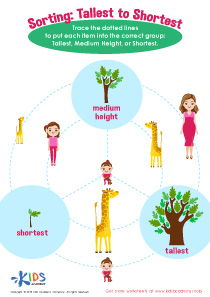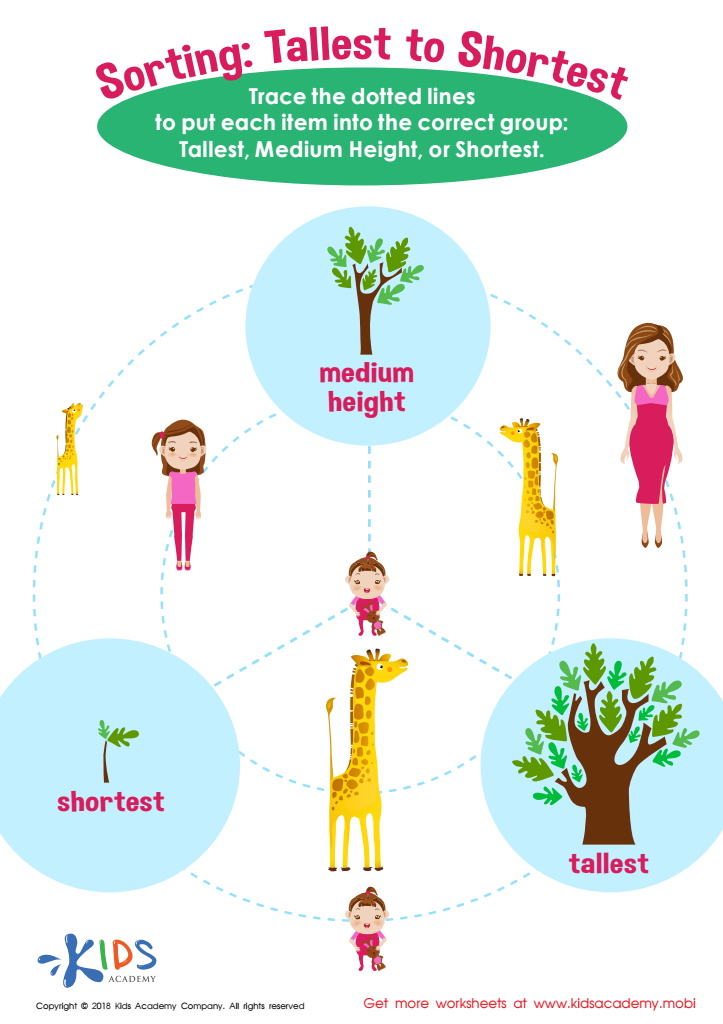Math Lesson - Enrichment, Data, Kindergarten
In this Enrichment lesson designed for Kindergarten students, we delve into the foundational aspects of Data within the broader context of Early Logic and Geometry. The key activity in this lesson, the "Sorting: Tallest to Shortest Worksheet," aims to introduce students to basic concepts of data organization and classification based on size.
Through this engaging activity, students will learn to observe, compare, and arrange objects according to their heights. This not only enhances their observational skills but also fosters critical thinking as they determine criteria for sorting. This process is fundamental, as it lays the groundwork for understanding more complex data organization and analysis skills in the future.
Understanding how to classify and sort objects based on specific attributes is crucial. It doesn't just apply to academic pursuits in mathematics and science but also plays a vital role in daily decision-making and problem-solving. For example, organizing toys by size or selecting the shortest queue at the supermarket. Encouraging these skills from an early age prepares students for logical reasoning, a skill that is invaluable in both their academic journey and everyday life.

-
Activity 1 / Sorting: Tallest to Shortest Worksheet
Being able to recognize relationships between tall and short is a key foundational skill for measurement. This charming PDF worksheet lets your little learners work on their fine motor skills as they use the traceable lines to put each picture in the correct group of tallest, shortest or medium. The relationship between the pictures will give them concrete images to use for comparison, and they'll be able to transfer those skills as they move into larger measurement concepts.

